Art or Sound

Art or Sound, Fondazione Prada, Venezia
From 7 June 2014 to 3 November 2014
Venice
Place: Fondazione Prada - Ca' Corner della Regina
Address: Santa Croce 2215
Times: 10 am - 6 pm; closed on Tuesday
Responsibles: Germano Celant
Telefono per informazioni: +39 041 8109161
E-Mail info: info@fondazioneprada.org
Official site: http://www.prada.com
The Fondazione Prada presents the exhibition “Art or Sound”, curated by Germano Celant, at its Venetian venue of Ca’ Corner della Regina, from June 7 to November 3, 2014.
Conceived as an investigation of the past and our present, the purpose of “Art or Sound” is to analyze the development of a productive and complex dialogue, the relationship between art and sound, iconic aspects of the musical instrument, the role of the artist-musician, and the areas in which the visual arts and music have come together and blurred.
The exhibition aims to emphasize the symmetrical and ambivalent link that exists between works of art and sound object: it offers a reinterpretation of the musical instrument and the way it can become a sculptural-visual entity and back again, in a continual reciprocal relationship of encroachment and inversion, a phenomenon seen since the 17th century. It analyzes the overlap between the production of art and sound, music and the visual arts, with the aim of highlighting the constant exchange between them, though eschewing unnecessary categorization.
Organized on a historical basis, “Art or Sound” starts off with musical instruments made from unusual and precious materials by Michele Antonio Grandi and Giovanni Battista Cassarini in the 17th century, along with musical automata—complex artworks that combine the production of sounds with aesthetic values—created, for instance, by the Swiss watchmaker Pierre Jaquet-Droz in the 18th century. It continues with 19th-century examples of automated musical instruments and mechanical devices capable of giving visual expression to music through light and color. Research in the field of the synesthesia is presented as well, with experiments carried out by the historical avant-gardes, such as the celebrated Intonarumori (1913) created by Futurist artist Luigi Russolo, and some of Giacomo Balla’s objects.
Also exhibited are instruments and works by composers like Alvin Lucier and John Cage, works by artists of the Sixties, such as the sound boxes of Robert Morris and Nam June Paik, kinetic sculptures made by artists like Takis and Stephan von Huene, and sound installations like Robert Rauschenberg’s Oracle (1962-’65) and Laurie Anderson’s Handphone Table (1978).
Conceived as an investigation of the past and our present, the purpose of “Art or Sound” is to analyze the development of a productive and complex dialogue, the relationship between art and sound, iconic aspects of the musical instrument, the role of the artist-musician, and the areas in which the visual arts and music have come together and blurred.
The exhibition aims to emphasize the symmetrical and ambivalent link that exists between works of art and sound object: it offers a reinterpretation of the musical instrument and the way it can become a sculptural-visual entity and back again, in a continual reciprocal relationship of encroachment and inversion, a phenomenon seen since the 17th century. It analyzes the overlap between the production of art and sound, music and the visual arts, with the aim of highlighting the constant exchange between them, though eschewing unnecessary categorization.
Organized on a historical basis, “Art or Sound” starts off with musical instruments made from unusual and precious materials by Michele Antonio Grandi and Giovanni Battista Cassarini in the 17th century, along with musical automata—complex artworks that combine the production of sounds with aesthetic values—created, for instance, by the Swiss watchmaker Pierre Jaquet-Droz in the 18th century. It continues with 19th-century examples of automated musical instruments and mechanical devices capable of giving visual expression to music through light and color. Research in the field of the synesthesia is presented as well, with experiments carried out by the historical avant-gardes, such as the celebrated Intonarumori (1913) created by Futurist artist Luigi Russolo, and some of Giacomo Balla’s objects.
Also exhibited are instruments and works by composers like Alvin Lucier and John Cage, works by artists of the Sixties, such as the sound boxes of Robert Morris and Nam June Paik, kinetic sculptures made by artists like Takis and Stephan von Huene, and sound installations like Robert Rauschenberg’s Oracle (1962-’65) and Laurie Anderson’s Handphone Table (1978).
SCARICA IL COMUNICATO IN PDF
martin creed
·
doug aitken
·
anri sala
·
christian marclay
·
janet cardiff
·
athanasios argianas
·
haroon mirza
·
ruth ewan
·
COMMENTI

-
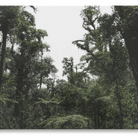 Dal 24 June 2025 al 29 October 2025
Firenze | Museo Novecento
Dal 24 June 2025 al 29 October 2025
Firenze | Museo Novecento
-
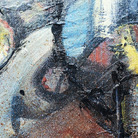 Dal 26 June 2025 al 18 July 2025
Firenze | Palazzo Sacrati Strozzi
Dal 26 June 2025 al 18 July 2025
Firenze | Palazzo Sacrati Strozzi
-
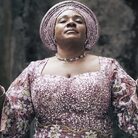 Dal 26 June 2025 al 28 September 2025
Roma | Vittoriano - Sala Zanardelli
Dal 26 June 2025 al 28 September 2025
Roma | Vittoriano - Sala Zanardelli
-
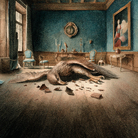 Dal 25 June 2025 al 26 October 2025
Bergamo | GAMeC
Dal 25 June 2025 al 26 October 2025
Bergamo | GAMeC
-
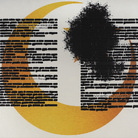 Dal 17 June 2025 al 6 January 2026
Perugia | Palazzo Baldeschi
Dal 17 June 2025 al 6 January 2026
Perugia | Palazzo Baldeschi
-
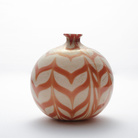 Dal 22 June 2025 al 11 January 2026
Possagno | Museo Gypsotheca Antonio Canova
Dal 22 June 2025 al 11 January 2026
Possagno | Museo Gypsotheca Antonio Canova


